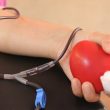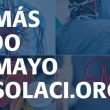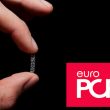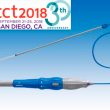This study provides the steps to follow in order to prevent or at least reduce radial artery occlusion after using it as an access for a diagnosis or treatment study. The use of transradial access is exponentially increasing worldwide due to its lower chance of bleeding events and vascular complications than transfemoral access. Radial artery...
TCT 2019 | PARTNER 2A at 5 Years: In Intermediate-Risk Patients, TAVR Is Still Head-to-Head with Surgery
Courtesy of the SBHCI. The 2-year results of the PARTNER 2A trial showed that transcatheter aortic valve implantation has a result similar to that of surgery in patients with aortic stenosis and intermediate surgical risk. We lacked long-term data, both clinical and related to prosthesis function. Now, at TCT 2019, researchers presented the 5-year data for this...
TCT 2019 | SCOPE I: Self-Expanding Valve Acurate Neo Head to Head with Sapien 3
Courtesy of SBHCI. This work, which was presented during the TCT 2019 Scientific Sessions and simultaneously published in the Lancet, randomized patients to the ACURATE Neo prosthesis (n = 373) vs. the SAPIEN 3 (n = 367) in a head-to-head comparison involving 20 European sites. Transfemoral access was used in all patients. The study had a noninferiority design, and its primary...
The Most Read Articles of may in Interventional Cardiology
1- Surprising EXCEL Outcomes in Diabetics with Main Left Stenosis This study especially designed to compare PCI vs. CABG in patients with left main coronary artery disease and low to intermediate Syntax score showed that 30-day and 3 -year outcomes of PCI with everolimus eluting stents vs CABG were consistent both in diabetic and non-diabetic...
EuroPCR 2019 | Most Recent TAVR Meta-Analysis: The Spectrum of Treatment Reaches All Patients
This new meta-analysis combines all randomized transcatheter aortic valve replacement (TAVR) vs. surgical aortic valve replacement trials and expands the scope of TAVR. Evidence across the range of risk studied supports a paradigm shift in patients with symptomatic severe aortic stenosis. The clinical superiority of TAVR compared with surgery has been demonstrated across the spectrum...
EuroPCR 2019 | CHOICE: Balloon-Expandable Valves vs. Self-Expanding Valves in High-Risk Patients
The CHOICE trial included 241 patients with severe aortic stenosis and high surgical risk who underwent transcatheter aortic valve replacement (TAVR) using transfemoral access. These patients were randomized to balloon-expandable valve (Edwards Sapien XT) vs. self-expanding valve (Medtronic CoreValve). The endpoints were all-cause mortality, stroke, readmission, valve function parameters as measured through an ultrasound, and...
TAVR Is Feasible and Offers Good Outcomes in Patients with Cancer
Courtesy of Dr. Carlos Fava. Oncology patients have been excluded from all studies, but many of them have a life expectancy of over a year or two, and aortic stenosis can pose a problem as regards their treatment. This study analyzed 2744 patients who underwent TAVR. Among them, 222 presented cancer (8.1%). Patients with cancer were younger,...
Percutaneous Closure Systems Are Safe in TAVR and Aneurysms
Courtesy of Dr. Carlos Fava. Currently, one of our medical challenges is to conduct procedures requiring access with large introducer sheaths in a simpler way, without requiring surgical intervention and closing with percutaneous devices while maintaining procedural quality and safety. There are several devices, but they require a learning curve and the only information available comes...
TCT 2018 | NEOPRO: A Registry for Acurate neo and Evolut PRO
The purpose of this registry was to compare short-term clinical events and echocardiographic findings in two self-expanding valves used with transfemoral access, Acurate neo and Evolut PRO. The registry included a retrospective follow-up of 1551 patients, among whom 1263 received an Acurate neo valve and 288 received an Evolut Pro valve. The procedural success rates according to VARC-2 criteria were...
New Atrial Fibrillation After TAVR Indicates Prognosis
Courtesy of Dr. Carlos Fava. Transcatheter aortic valve replacement (TAVR) has emerged as an important treatment alternative for intermediate- and high-risk patients. In that sense, the presence of atrial fibrillation (AF) before TAVR is high and it has been associated with worse outcomes and higher mortality. However, there is not much evidence available regarding new-onset atrial...








